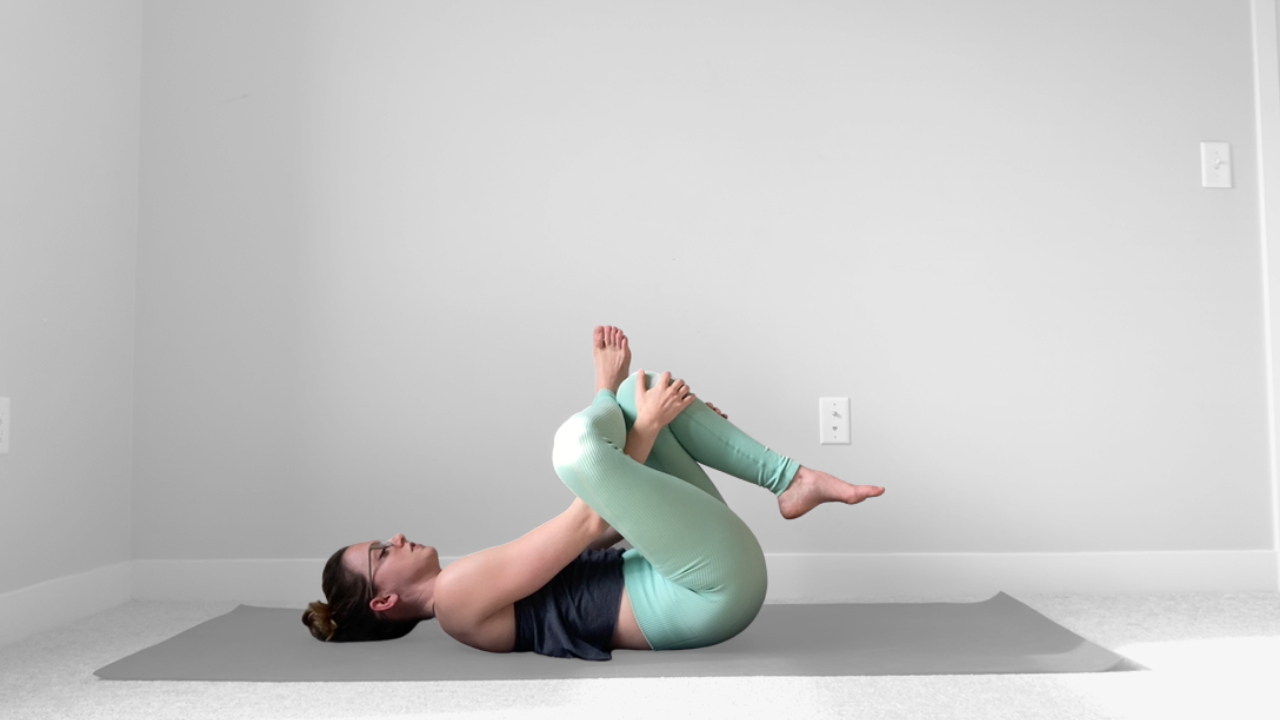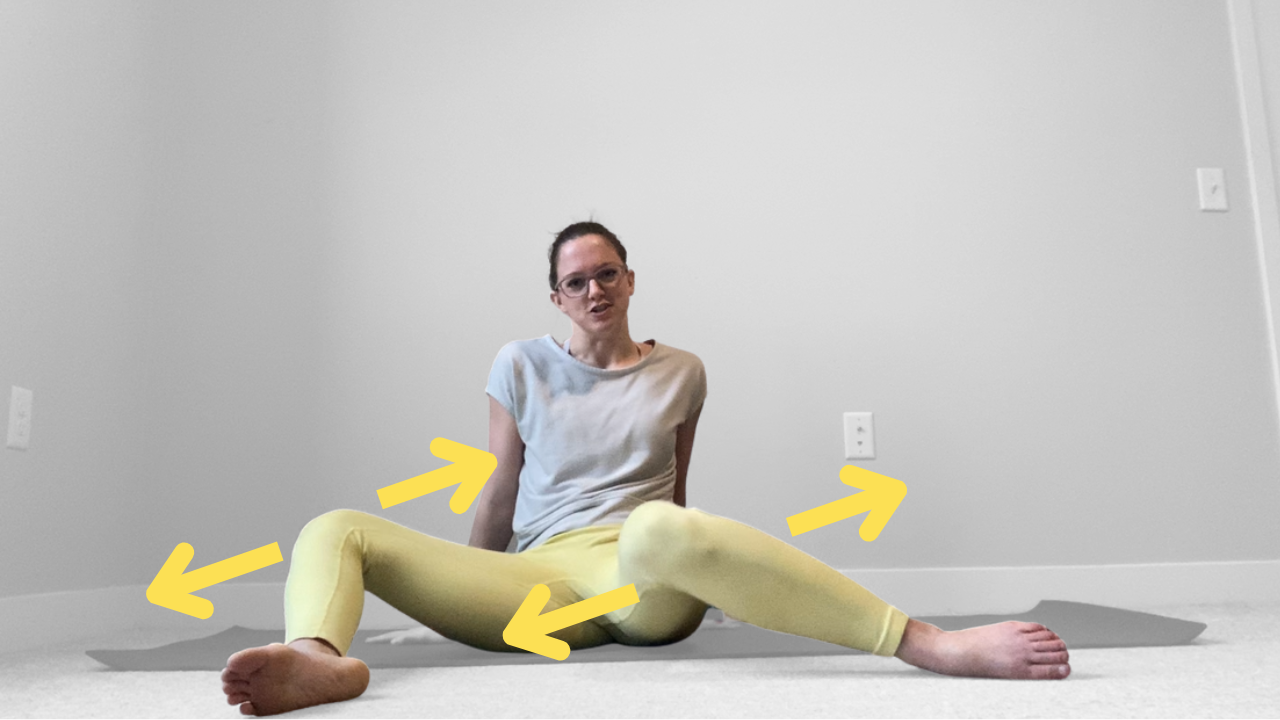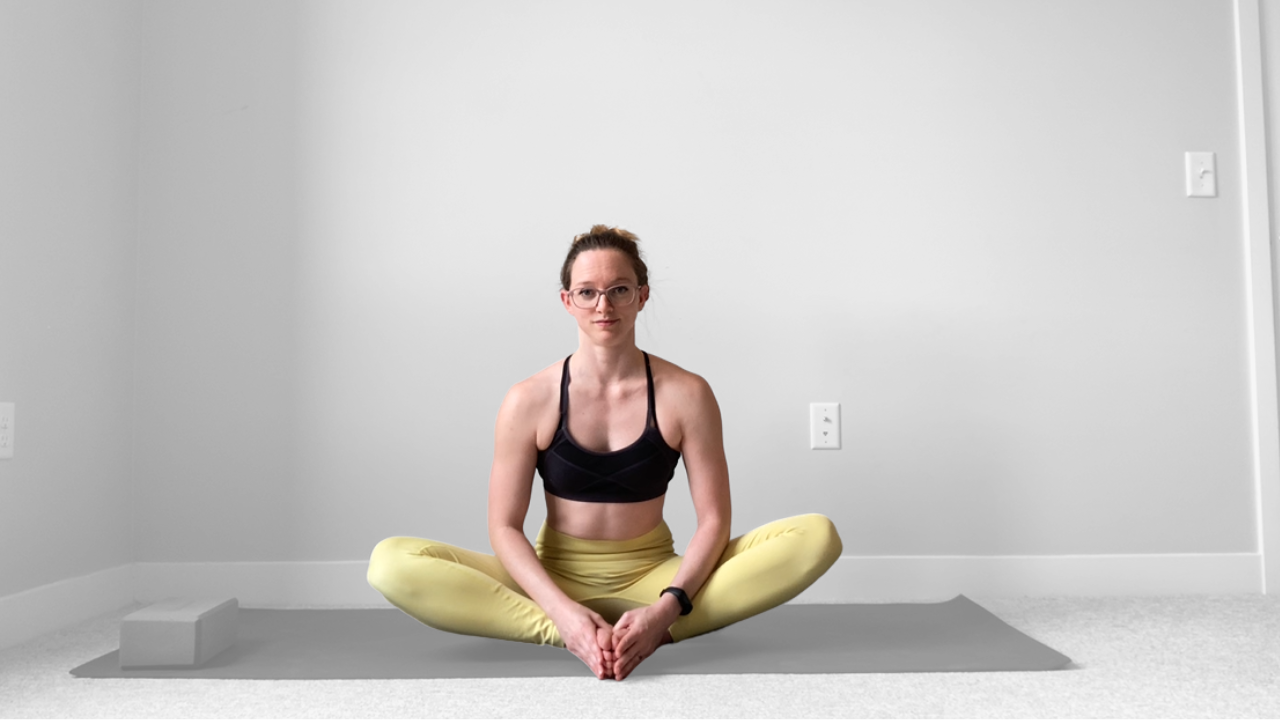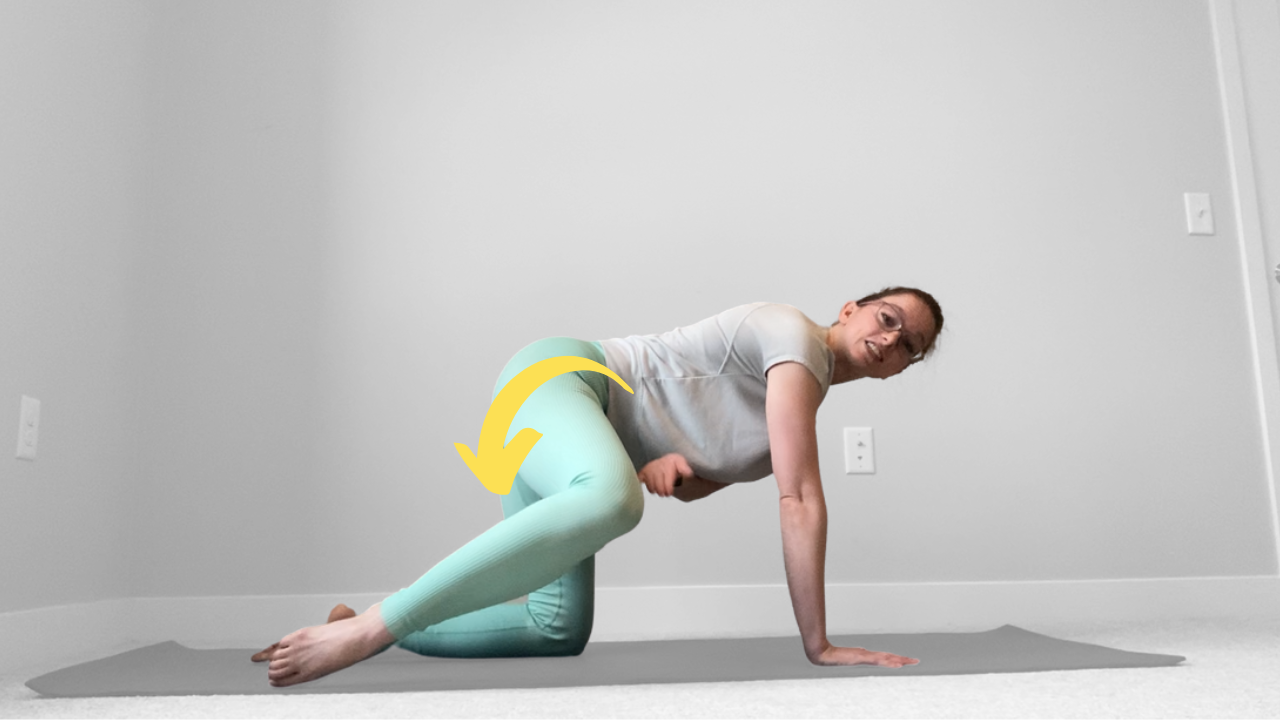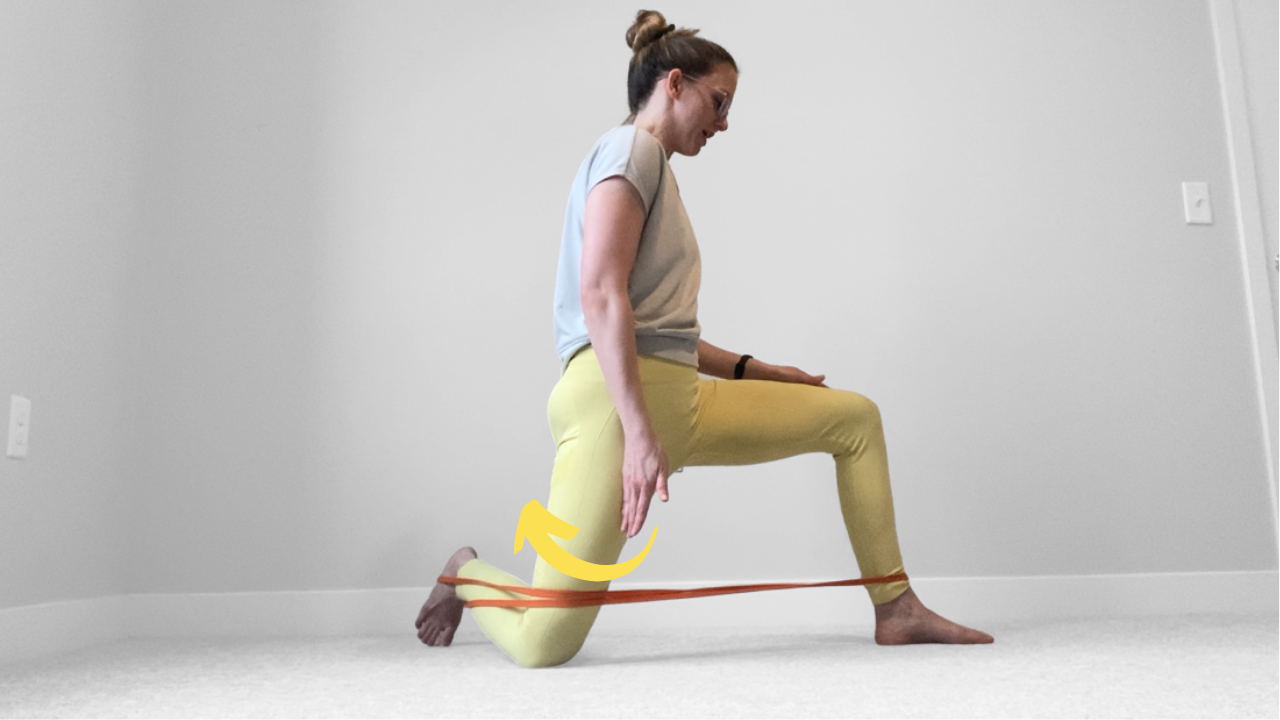Hip Rotation (ROM)
Flexopedia: Hip Rotation
Jump To: Overview | Considerations for Stretching | Passive Stretches | Active Stretches
Rotation is a range of motion that all ball-and-socket joints (ex. shoulder, hips) have that allow them to be extra mobile and move in (virtually) 360 degrees of motion. Hip rotation is the range of motion of rotating our femur (thigh bone) relative to our pelvis (hip bones).
Typically we talk about hip rotation in two directions:
Hip External Rotation =
Thigh Rotating Away From Midline
Hip external rotation happens when our thigh bone is rotating away from our midline. Functional examples include:
A ballet dancer “turning out” her thighs for standing stances
A figure skater rotating the back leg in a leg scale for a higher leg lift
A pole dancer rotating the outside leg to get the knee pit to the pole when entering an outside leg hang (although once in an outside leg hang, we actually engage our internal rotators, which are in a lengthened position in this pose, to increase the grip)
Hip Internal Rotation =
Thigh Rotating In Towards Midline
Hip internal rotation happens when our thigh bone rotates towards our midline. Functional examples include:
A baseball batter (or pitcher!) internally rotating their front leg when about to hit (or throw) a ball
A golfer twisting into internal hip rotation on their swing follow through
A martial artist rotating their thigh towards the floor for extra height and power in a roundhouse kick
So depending on your hobby or sport of choice, increasing the flexibility in your range of motion for hip rotation can be beneficial for various movements/postures.
A second (and arguably even more important) reason to work on hip rotation exercises is because our hip rotator muscles often serve as stabilizers in the hip. Keeping those stabilizers strong not only ensures your hips will continue to move efficiently, but they can even help your body feel safer in other positions to allow a deeper end range stretch. For example, in a traditional front split we don’t want our hips to be rotated at all (our hip bones should be pointing forwards, with the front thigh facing the ceiling, and back thigh facing the floor). But if we’re doing a lot of end range flexibility work and our stabilizing muscles aren’t firing in our hip joint, our body isn’t going to feel safe working on our front splits, and not allow us to go to our “true” end range of motion in our hamstrings and hip flexors because the hips don’t feel stable. So working on active hip rotation can be beneficial to non-rotation type stretching as well!
Consideration #1: Be gentle on your knees. Our hips are a ball and socket joint that can move in all three planes of motion. Our knees, however, are a hinge joint and can only move in one plane of motion. That means any time our shin is not in line with our hips (whether due to our knee being bent, or our shin bones rotating), there is potential for uncomfortable (and possibly unsafe) shearing or twisting force on the knee joint if we push the stretch too far. Thankfully our bodies are pretty darn good at warning us with pain signals when it perceives we’re in an unsafe position. So as always, never stretch through pain or push yourself into a position that’s causing you knee discomfort.
Consideration #2: Work your hip rotation in the hip position you use in your sport. The hip is a relatively complex joint. Based on where our muscles attach, different muscles are responsible for hip rotation depending on the orientation of where our leg is in space (usually the change happens when the hip is flexed 90 degrees or more). That means we use (and stretch) different muscles when externally rotating our hips when standing than we do when we’re sitting in a chair (aka in a flexed hip position) and rotating our thigh to the outside. While there is some overlap in muscles used, it will be more beneficial for your sport to aim for more stretches/drills that work your rotators in a more similar position to what hip position you use in your sport.
Consideration #3: Strengthen both ranges of motion! Even if you don’t use a lot of internal hip rotation in your sport (ballet, for example, has a strong skew towards externally-rotated leg positions), because your rotator muscles are hip stabilizers, it’s important to condition both ranges of motion to ensure strength and stability throughout the joint.
Active flexibility drills for hip external and internal rotation




